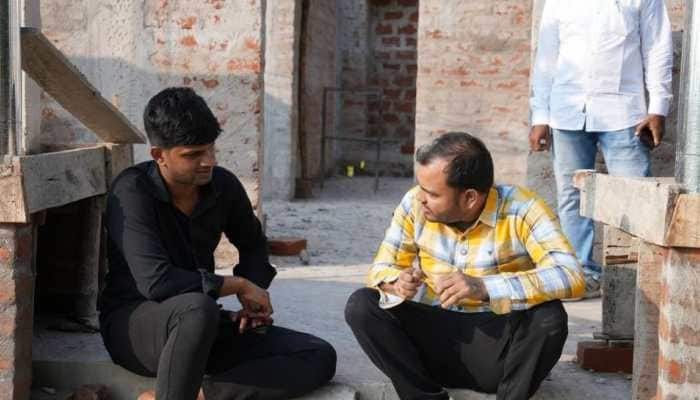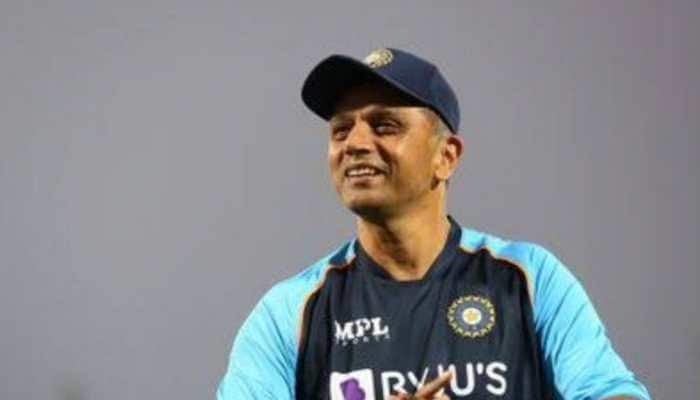Karnataka vs Saurashtra, Vijay Hazare Trophy final: Cheteshwar Pujara fought bravely but just fell short in the intent stakes
Chesteshwar Pujara's 94 went in vain on Tuesday as Karnataka beat Saurashtra to lift the Vijay Hazare Trophy.
Trending Photos
) File photo: Reuters
File photo: Reuters If Saurashtra skipper Cheteshwar Pujara were to be rated by the plan he had in his mind before the beginning of the chase, he would get 10 out of 10. A plan telling you that he certainly belonged to the elite league, especially the way he had conceptualized it, considering he didn't have latest hands-on limited-overs experience. However, good planning is nothing if the execution is faulty: the end result will be a failure, no matter how hard one tries in the latter stages to make it a success.
On Tuesday, Pujara was to witness his own plan fall apart, phase by phase, over by over, during the 253-run chase in the final of the Vijay Hazare Trophy against Karnataka at the Ferozeshah Kotla in New Delhi.
The 30-year-old went according to plan in building a firm base. Tick. Then he sat on the base, slowing down the progress, thus introducing the fault, and later desperately doing his damnedest to repair the damage. Alas, it was already a little too late. Saurashtra fell short by 41 runs. He might have got to a brave 94 of 127 balls but he operated at a snail’s pace (strike rate of nearly 50) during the building phase, copping a lot of criticism by many after the match.
Saurashtra stuttered at the start losing two quick wickets (15/2) but Pujara and Avi Barot steadied the ship, adding 62 runs in the following 15 overs. On a wicket that was slow and had crumbled near the business area on either end, a run-rate of 4.5 wasn't at all bad, considering the odd slower balls by the medium pacers spat from the surface.
Stroke-making was a challenge but not quite an impossible task. However, Pujara's inability to rotate strike frequently during that period had a negative effect on his partner, who in desperation holed out to long-on at a crucial juncture. Barot was better rotating the strike but Pujara had completley dropped anchor.
“I thought we had a fair chance the way we had started but middle overs was the phase where we didn’t bat well and lost too many wickets in two-three overs. So that was the reason we lost but 253 I think was really gettable on this wicket,” Pujara said after the match.
Not just Pujara, but every eye present in the ground thought likewise. Then came Ravindra Jadeja and began Saurashtra’s blockathon, literally. In the next ten overs, they had compiled just 24 runs, at 2.4 per over, giving Karnataka the upper hand. Though it was getting tough to negotiate the spinners, there was no denying that the set Pujara had failed to show intent.
And that is where you see the difference between Pujara the Test player and Pujara the limited batsman in shorter formats. He may still harbour hopes to put his limited-overs career back on track but such innings are proof enough, highlighting his inability to force the pace.
Till the time Karnataka spinners K Gowtham, Pavan Deshpande and Shreyas Gopal operated, Pujara did not step out even once forcing them to bowl according to his liking. Somewhere it also shows his reluctance or the under-confidence to jump out to deliveries bowled from a flatter trajectory. In the longest format of the game, however, Pujara has all the time to pick the right delivery before jumping out to place it to perfection.
The consequence was another blow for Saurashtra in the form of Jadeja, who was suffering from a stiff back. Frustration saw him hole out too.
Another two wickets followed in quick succession as the newcomers tried to get among the runs straight away on the tricky Kotla wicket. Suddenly from 77/3, Saurashtra were tottering at 101/6 in only the 29th over.
While Pujara might not have felt the pressure of the run-rate mounting and having asked his partners to keep their cool, the pressure of surmounting 253 had certainly trickled down to the less experienced.
“We lost too many wickets early on and had we had wickets in hand I would have accelerated after 20-30 overs, but if we are six down, I can’t take that risk and middle overs was the phase where the ball was turning a bit. That was the time I talked to other batsmen that we need to be careful and once you are set on this wicket, you could play your shots,” Pujara claimed.
Pujara appears to be right in his estimation. It was easier to score runs off pace than spin. At the same time, had he shown more intent and rotated strike often, even if it was to score singles and doubles, the situation could have been much better. There was a time during the chase when Pujara actually seemed unfazed by the asking rate, and rather looked to be preparing for his County stint, starting early April.
And then came the time when Pujara took the offensive alongside Kamlesh Makwana, showing the spark in the latter stages of the chase. With Saurashtra needing 87 of 48 balls, Pujara made his intentions clear and smacked Sreenath Aravind for 15 runs to reach 84 in 121 balls. That even left Karnataka captain Karun Nair baffled. "He took us by surprise. We didn't expect him to play those strokes," he said.
Two overs later, when Pujara had raised the hopes of a turnaround with his side needing 62 off 36 balls, he got run out six runs short of a century.
The game was over but you could certainly thank him for waking up the visitors from their afternoon nap. But honestly, the onslaught came a little too late and could have arrived a good 10-12 overs before.
“Well, I was batting very well and knew if we needed 100 runs in the last 10 overs, it was quite gettable considering the small boundary and the quick outfield. I was telling Makwana that we should carry on and I will just take the bowlers on, but unfortunately, I got run out. Had I been batting, things could have been different and had we batted well in the middle overs, we wouldn’t have lost by 41 runs,” Pujara said.
Pujara stalling in the middle overs wasn’t anything new in this tournament. In fact, all his recent Vijay Hazare outings highlight his weakness to up the run-scoring.
In the last game against Andhra, he had scored 17 off 53 balls, and the game previous to that he scored 40 off 66 against Baroda. Interestingly, this is the phase which tells us about his plan falling apart. Pujara is usually set when he reaches the middle-overs and where he should be trying to force himself on the opposition, he exactly does the opposite.
In the end, when Pujara shared his clever approach, it showed his shrewdness as a batsman and the hunger to keep going with an aim to see his side through. But often, the best of plans backfire on days when you need them to work the most. You could say, it was one of those days in the life of Pujara.
Stay informed on all the latest news, real-time breaking news updates, and follow all the important headlines in india news and world News on Zee News.
Live Tv







)
)
)
)
)
)
)
)
)
)
